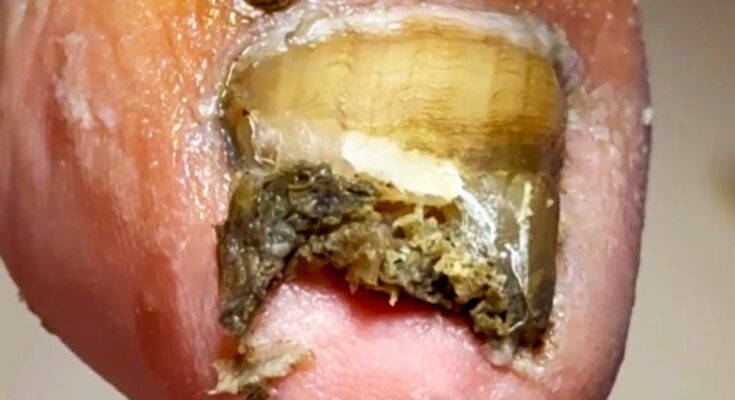When dealing with dark toenails with accumulated mud or dirt underneath, it’s important to proceed with care to avoid injury or further damage to the nail. Here’s a step-by-step guide for decompression and cleaning:
1. Soak Your Feet
- Purpose: Softening the skin and dirt can make it easier to clean.
- How to do it: Fill a basin with warm water, and add Epsom salt or mild soap. Soak your feet for 10-15 minutes.
2. Examine the Toenail
- Check for infection: If there’s redness, swelling, or pus, the nail may be infected, and you should consider seeing a doctor.
- Assess the amount of dirt: Look carefully to see how much mud or debris has accumulated under the nail.
3. Use a Soft Brush
- Purpose: To gently scrub and dislodge any dirt or mud from underneath.
- What to use: A soft toothbrush or a nail brush can be very helpful. Avoid using something too hard to prevent damaging the nail.
4. Cleaning with a Nail Tool (Optional)
- Purpose: If dirt is deeply embedded, you may need to use a tool to gently lift it out.
- How to do it: Using a sanitized cuticle pusher or nail scraper, carefully clean under the nail. Do this gently to avoid injuring the nail bed or cuticle.
5. Trim the Toenail
- Why: If the toenail is thickened, trimmed nails may allow easier cleaning and reduce the risk of fungus or infection.
- How: Cut straight across the nail to avoid ingrown toenails. If the nail is too thick or painful, consult a healthcare provider for help.
6. Decompression (If Necessary)
- If the toenail is injured or there’s fluid buildup underneath, decompression can help relieve pressure. This should be done by a professional, as it involves creating a small hole in the nail to release pressure safely.
7. Apply an Antiseptic
- After cleaning, apply an antiseptic solution like hydrogen peroxide or iodine to prevent infection. Be sure to dry the area properly.
8. Moisturize the Nail
- Apply a moisturizing lotion or oil to the nail and surrounding skin to keep the area hydrated and prevent cracking.
9. Monitor for Infection
- Keep an eye on any changes in the color of the toenail, swelling, or pain. If the toenail turns green, yellow, or if there’s pus, consult a doctor for further treatment.
10. Seek Professional Help If Needed
- If the toenail is severely damaged, infected, or if you’re unsure about how to proceed, it’s always best to consult a podiatrist for professional treatment.
These steps should help you with cleaning and caring for your toenail, but remember, the health of your nails is important, so don’t hesitate to seek professional care if needed!



